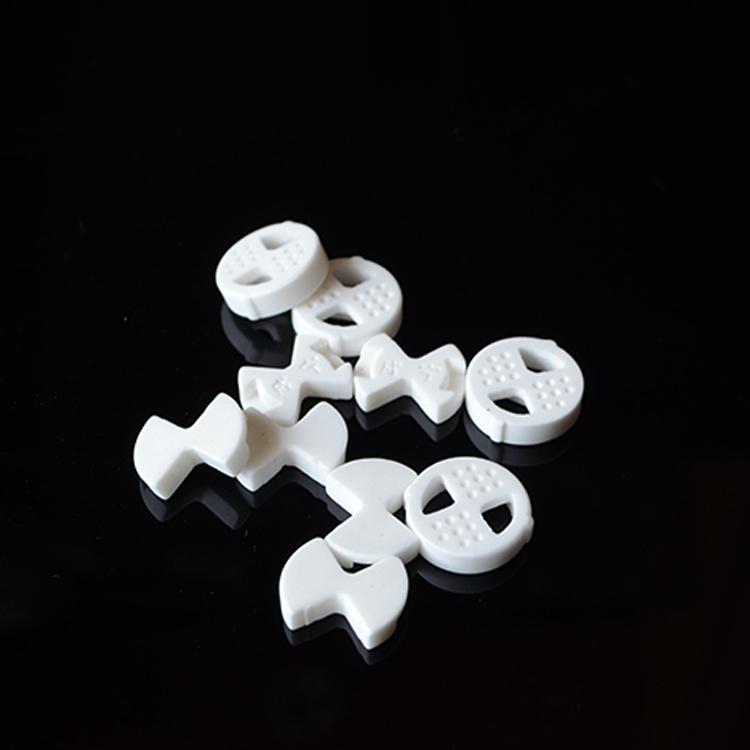
Understanding High Heat Resistance Ceramic Parts in Construction and Decoration
Time:
2025-05-16 11:00
Source:
High heat resistance ceramic parts have become increasingly important in the construction and decorative materials sector, specifically within the realm of bricks and stone materials. These components are known for their ability to withstand extreme temperatures, making them invaluable in various applications.
One of the primary characteristics of high heat resistance ceramics is their structural integrity under high temperatures. Unlike traditional materials that may warp or degrade when exposed to heat, these ceramics retain their shape and function. This feature is particularly beneficial in environments subjected to thermal stress, such as fireplaces, kilns, or areas near heat sources. For builders and designers, this quality ensures that the aesthetic and structural elements of a project remain intact over time.
In addition to temperature resistance, high heat resistance ceramic parts are also recognized for their durability and longevity. They are less prone to cracking or chipping, which not only enhances the lifespan of a project but also reduces maintenance costs over time. This durability makes them an ideal choice for high-traffic areas or installations where wear and tear is expected.
Moreover, the versatility of high heat resistance ceramics allows them to be used in various forms, including tiles, bricks, and decorative elements. Their ability to be manufactured in different colors, textures, and finishes enables architects and designers to incorporate them into a wide range of artistic expressions and functional designs. Whether it’s for a modern kitchen backsplash or a classic fireplace surround, these ceramic parts offer both beauty and resilience.
Another significant advantage is their thermal insulation properties. High heat resistance ceramics can effectively minimize heat transfer, making them suitable for energy-efficient designs. This characteristic is particularly essential in sustainable construction practices, where reducing energy consumption is a priority. By utilizing these materials, builders can contribute to eco-friendly initiatives without compromising on quality or style.
Additionally, high heat resistance ceramics are non-combustible, providing an extra layer of safety in residential and commercial spaces. This property is particularly crucial in fire-prone areas, where building codes may require the use of fire-resistant materials. By opting for ceramics designed to withstand high heat, you can ensure compliance with safety regulations while enhancing the overall design of the space.
In conclusion, high heat resistance ceramic parts play a pivotal role in the construction and decoration materials industry. Their ability to withstand extreme temperatures, coupled with durability, versatility, and safety, makes them an excellent choice for a variety of applications. Whether you are a builder, architect, or homeowner, understanding the benefits of these materials can help you make informed decisions that enhance both the functionality and aesthetic appeal of your projects.
One of the primary characteristics of high heat resistance ceramics is their structural integrity under high temperatures. Unlike traditional materials that may warp or degrade when exposed to heat, these ceramics retain their shape and function. This feature is particularly beneficial in environments subjected to thermal stress, such as fireplaces, kilns, or areas near heat sources. For builders and designers, this quality ensures that the aesthetic and structural elements of a project remain intact over time.
In addition to temperature resistance, high heat resistance ceramic parts are also recognized for their durability and longevity. They are less prone to cracking or chipping, which not only enhances the lifespan of a project but also reduces maintenance costs over time. This durability makes them an ideal choice for high-traffic areas or installations where wear and tear is expected.
Moreover, the versatility of high heat resistance ceramics allows them to be used in various forms, including tiles, bricks, and decorative elements. Their ability to be manufactured in different colors, textures, and finishes enables architects and designers to incorporate them into a wide range of artistic expressions and functional designs. Whether it’s for a modern kitchen backsplash or a classic fireplace surround, these ceramic parts offer both beauty and resilience.
Another significant advantage is their thermal insulation properties. High heat resistance ceramics can effectively minimize heat transfer, making them suitable for energy-efficient designs. This characteristic is particularly essential in sustainable construction practices, where reducing energy consumption is a priority. By utilizing these materials, builders can contribute to eco-friendly initiatives without compromising on quality or style.
Additionally, high heat resistance ceramics are non-combustible, providing an extra layer of safety in residential and commercial spaces. This property is particularly crucial in fire-prone areas, where building codes may require the use of fire-resistant materials. By opting for ceramics designed to withstand high heat, you can ensure compliance with safety regulations while enhancing the overall design of the space.
In conclusion, high heat resistance ceramic parts play a pivotal role in the construction and decoration materials industry. Their ability to withstand extreme temperatures, coupled with durability, versatility, and safety, makes them an excellent choice for a variety of applications. Whether you are a builder, architect, or homeowner, understanding the benefits of these materials can help you make informed decisions that enhance both the functionality and aesthetic appeal of your projects.
High heat resistance Ceramic part

